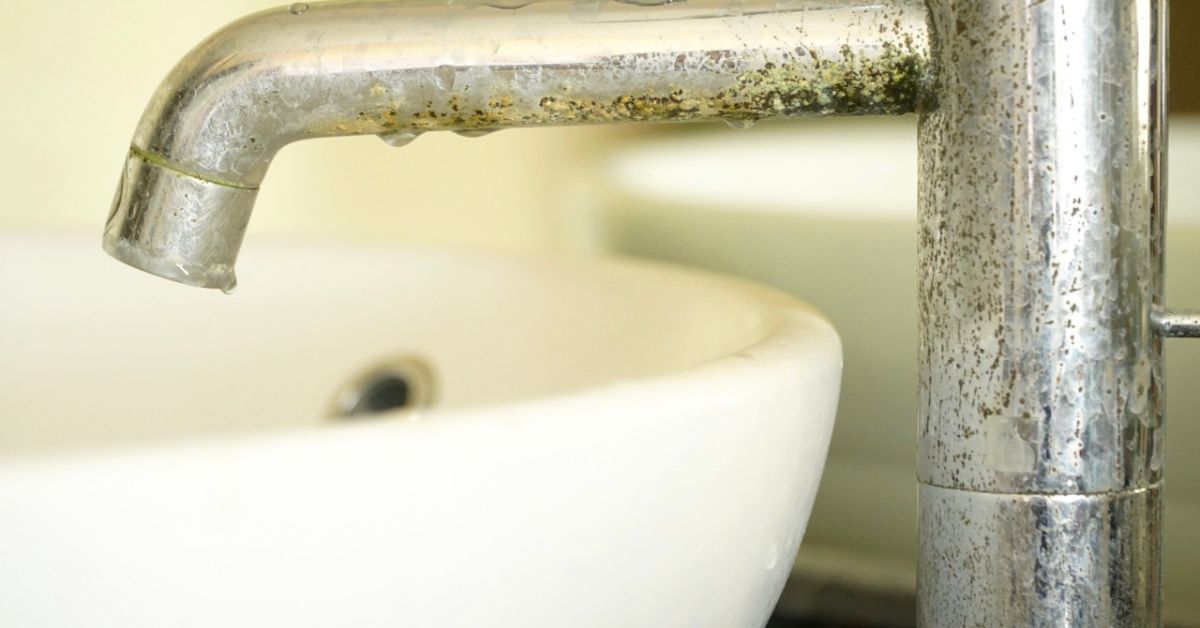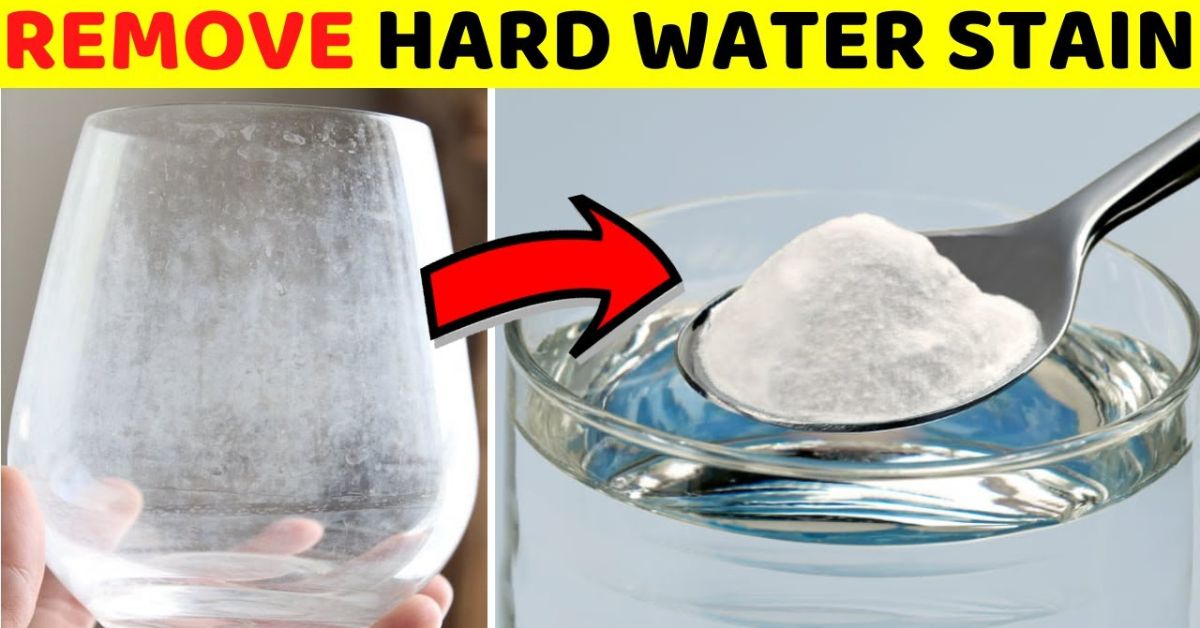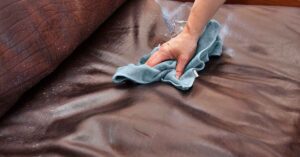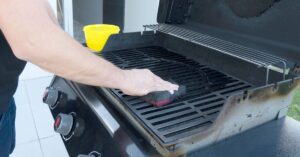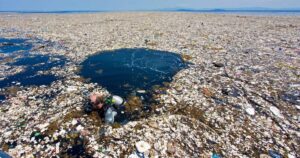Hard water stains can make your stainless steel look dull and dirty. It’s a common issue many households face, especially in areas with hard water. These stains are tough to remove with regular cleaning. If left untreated, they can become even more stubborn over time.
Seeing those unsightly marks can be frustrating. They ruin the sleek look of your stainless steel appliances, making them appear old and neglected. You’ve probably tried scrubbing, but the stains just won’t budge. It feels like a never-ending battle against grime.
Don’t worry, experts have solutions that work. With the right techniques, you can restore the shine to your stainless steel, making it look brand new again. Let’s dive into the best methods to tackle those hard water stains. These expert tips will save you time and effort.
Why Hard Water Stains Form on Stainless Steel
Hard water stains form on stainless steel because hard water contains high levels of minerals like calcium and magnesium. When water evaporates from the surface, these minerals are left behind. Over time, they accumulate and create a visible residue that appears as white or chalky stains.
These mineral deposits are stubborn and adhere tightly to the stainless steel, making them difficult to remove with regular cleaning methods. The stains can become more pronounced with repeated exposure to hard water. Understanding the cause is the first step to effectively removing and preventing these stains.
Materials Needed
To effectively remove hard water stains from stainless steel, you’ll need a few simple materials.
Remove Hard Water Stains on Stainless Steel Using Vinegar
To remove hard water stains on stainless steel using vinegar, start by mixing equal parts of white vinegar and water in a spray bottle. Spray the solution directly onto the stained area. Let it sit for a few minutes to break down the mineral deposits.
Next, use a soft cloth or sponge to gently scrub the area. The vinegar will help dissolve the stains, making them easier to wipe away. Finally, rinse the surface with water and dry it with a microfiber cloth to prevent new stains from forming.
Remove Hard Water Stains on Stainless Steel Using Lemon
Removing hard water stains from stainless steel using lemon is simple and effective. Start by cutting a lemon in half and rubbing it directly onto the stained area. The natural acidity of the lemon helps to break down the mineral deposits. Let the lemon juice sit on the surface for a few minutes to ensure it penetrates the stains.
After the lemon juice has had time to work, use a soft cloth or sponge to scrub the area gently. The stains should come off more easily. Once the stains are removed, rinse the surface with water to wash away any leftover lemon juice. Finally, dry the stainless steel with a microfiber cloth to prevent new stains from forming.
Remove Hard Water Stains on Stainless Steel Using Baking Soda
To remove hard water stains from stainless steel using baking soda, start by making a paste. Mix a few tablespoons of baking soda with a small amount of water until it forms a thick consistency. Apply the paste directly onto the stained area. Let it sit for a few minutes to allow the baking soda to work on the stains.
Next, use a soft cloth or sponge to gently scrub the area in circular motions. The mild abrasiveness of the baking soda will help lift the stains without scratching the surface. Once the stains are gone, rinse the area with water to remove any residue. Finally, dry the stainless steel with a microfiber cloth to prevent new stains from forming.
Remove Hard Water Stains on Stainless Steel Using Club Soda
To remove hard water stains from stainless steel using club soda, start by pouring some club soda into a spray bottle. Spray the club soda directly onto the stained area. Let it sit for a few minutes to help loosen the mineral deposits. The carbonation in the club soda works to break down the stains.
Next, use a soft cloth or sponge to gently scrub the area in circular motions. The bubbles in the club soda will aid in lifting the stains from the surface. Once the stains are removed, rinse the area with water to wash away any remaining residue. Finally, dry the stainless steel with a microfiber cloth to prevent new stains from forming.
How to Prevent Hard Water Stains on Stainless Steel
To prevent hard water stains on stainless steel, start by regularly cleaning the surfaces with a mild dish soap and water. Wipe down the stainless steel daily to remove any moisture and mineral deposits before they have a chance to build up. Ensure you dry the surface thoroughly with a soft cloth to prevent water from evaporating and leaving behind stains.
Applying a protective layer can also help prevent stains. After cleaning, use a small amount of olive oil or baby oil to lightly coat the stainless steel. This creates a barrier that repels water and reduces the chance of mineral deposits forming. Additionally, installing a water softener can lower the mineral content in your water, making it less likely to leave stains on your appliances.
Frequently Asked Questions
How often should I clean stainless steel to prevent hard water stains?
Clean stainless steel daily or at least once a week to remove moisture and mineral deposits before they can build up.
Can I use regular cleaning products to remove hard water stains?
Regular cleaning products might not be effective; use vinegar, baking soda, or lemon for better results against hard water stains.
Is it necessary to dry stainless steel after cleaning?
Yes, drying stainless steel completely after cleaning helps prevent water from evaporating and leaving behind hard water stains.
How can I protect stainless steel from future hard water stains?
Apply a thin layer of olive oil or use a water softener to create a protective barrier and reduce mineral deposits.
Conclusion
In conclusion, preventing and removing hard water stains from stainless steel is manageable with the right techniques. Regular cleaning with vinegar, baking soda, or lemon can effectively tackle existing stains, while daily wiping and drying help prevent new ones. Applying a protective layer of oil and using a water softener can further reduce the risk of stains. By following these simple steps, you can maintain the shine and cleanliness of your stainless steel appliances with ease.

